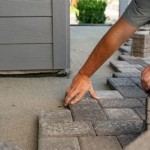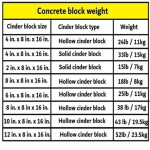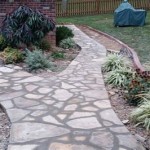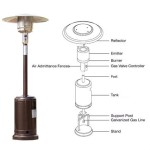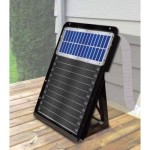Replacement Screens for Sliding Glass Patio Doors: A Comprehensive Guide
Sliding glass patio doors offer homeowners a seamless transition between indoor and outdoor living spaces. A crucial, yet often overlooked, component of these doors is the screen. The screen allows fresh air to circulate while keeping insects and debris out. However, screens are susceptible to damage from various factors, necessitating replacement. This article provides a comprehensive overview of replacement screens for sliding glass patio doors, covering different types, materials, and the replacement process.
Identifying the Need for a Replacement Screen
Several indicators suggest the need for a replacement screen. Obvious signs include tears, holes, and significant damage to the mesh. Even small tears can quickly expand, rendering the screen ineffective. A sagging or warped screen frame is another indication, as it can compromise the screen's ability to create a tight seal against the door frame. Furthermore, if the screen is constantly detaching from the rollers or track, it may be time for a replacement. Discoloration and excessive dirt buildup, despite regular cleaning, can also justify replacement, especially if it obstructs visibility and airflow.
Beyond the obvious physical damage, consider the screen's performance. If insects are consistently entering the home despite the screen being in place, this suggests a compromised screen with undetected damage or a poor fit. Similarly, if pets have damaged the screen, even minor damage can quickly escalate, requiring a prompt replacement. Ignoring these issues can lead to increased insect intrusion, reduced energy efficiency, and a compromised aesthetic appeal.
A preventative approach is often more cost-effective in the long run. Regular inspections of the screen’s condition are recommended. This includes checking for tears, holes, warping, and proper functionality. Addressing minor issues promptly, such as repairing small tears with screen repair tape, can extend the screen's lifespan. However, if the damage is extensive or the screen is exhibiting multiple problems, replacement is usually the more practical solution.
Types of Replacement Screens
The market offers a variety of replacement screens for sliding glass patio doors, each with its own advantages and disadvantages. Understanding these different types allows homeowners to select the most suitable option for their needs and budget. The primary differentiators are the screen material, frame construction, and overall design.
Standard Fiberglass Screens: These are the most common and affordable type of replacement screen. Fiberglass screens are known for their durability and resistance to stretching or sagging. They are generally easy to install and maintain. However, fiberglass screens are more susceptible to damage from sharp objects and pet claws compared to other options. They offer adequate insect protection and visibility, making them a suitable choice for general use.
Aluminum Screens: Aluminum screens are significantly more durable than fiberglass screens. They are resistant to rust, corrosion, and damage from pets. Aluminum screens also offer better visibility and allow for greater airflow. However, they are typically more expensive than fiberglass screens and may be prone to denting. They are a good option for homeowners who prioritize durability and longevity, particularly in areas with harsh weather conditions or with pets.
Polyester Screens (Pet Screens): Designed specifically for pet owners, polyester screens are significantly stronger and more resistant to tears and scratches than fiberglass or aluminum screens. These screens are made from heavy-duty polyester mesh that can withstand the wear and tear of pets. While they may slightly reduce visibility compared to standard screens, the added durability makes them a worthwhile investment for homes with animals. They are typically more expensive than fiberglass screens but offer superior protection against pet-related damage.
Solar Screens: Solar screens are designed to reduce the amount of heat and UV rays entering the home. They are made from a tightly woven mesh that blocks a significant portion of sunlight. Solar screens can help to lower energy costs by reducing the need for air conditioning. They also protect furniture and flooring from fading due to UV exposure. However, they may significantly darken the room and reduce visibility. Solar screens are a good option for homeowners who live in hot climates or have concerns about UV damage.
Retractable Screens: Retractable screens offer a unique solution that allows homeowners to easily retract the screen when not in use. These screens are housed in a cassette mounted on the door frame and can be pulled out and secured when needed. Retractable screens are ideal for homeowners who want the option of having an unobstructed view when the screen is not necessary. However, they are typically more expensive than traditional screens and may require professional installation. Maintenance is also a consideration, as the retraction mechanism may require periodic cleaning and lubrication.
The Replacement Process: A Step-by-Step Guide
Replacing a sliding glass patio door screen is a relatively straightforward process that most homeowners can accomplish with basic tools and instructions. However, it's important to follow the steps carefully to ensure proper installation and functionality. The specific steps may vary slightly depending on the type of screen and door frame, but the general principles remain the same.
1. Removing the Old Screen: Begin by carefully removing the old screen from the door frame. Most sliding screens are held in place by rollers at the top and bottom. These rollers can usually be adjusted using a screwdriver. Loosen the rollers to create enough space to lift the screen out of the track. Gently pull the screen away from the door frame and set it aside.
2. Measuring for the New Screen: Accurately measuring the dimensions of the old screen frame is crucial for ensuring a proper fit for the new screen. Use a measuring tape to measure the width and height of the frame. It is recommended to measure multiple points along the frame to account for any variations. Note that some manufacturers require specific measurements, so it's important to check their guidelines before ordering the new screen.
3. Ordering the New Screen: Once the measurements are obtained, the new screen can be ordered. Replacement screens can be purchased at most home improvement stores or online retailers. Ensure that the new screen is the correct size and type for the door frame. If ordering online, carefully review the product specifications and customer reviews to ensure quality and compatibility.
4. Installing the New Screen: With the new screen in hand, the installation process can begin. Position the screen in the door frame track, aligning the rollers with the frame's channels. Adjust the rollers using a screwdriver until the screen fits snugly and slides smoothly. Ensure that the screen is properly seated in the track and does not wobble or bind. Test the screen by sliding it back and forth to ensure proper functionality.
5. Securing the Screen: Once the screen is properly installed and functioning smoothly, it's important to secure it in place. This may involve tightening the roller adjustments, adding additional screws, or using other securing mechanisms depending on the screen design. Refer to the manufacturer's instructions for specific guidance on securing the screen. This step is crucial for preventing the screen from dislodging during use.
6. Testing and Adjustments: After securing the screen, thoroughly test its functionality. Slide the screen back and forth several times, checking for smooth movement and proper alignment. Inspect the screen for any gaps or openings that could allow insects to enter. Make any necessary adjustments to the rollers or securing mechanisms to ensure optimal performance. This final step ensures the screen is functioning correctly and providing the desired protection.
For homeowners who are uncomfortable with performing the replacement process themselves, professional installation services are available. These services typically include measuring, ordering, and installing the new screen, ensuring a proper fit and functionality. While professional installation may incur additional costs, it can provide peace of mind and guarantee a satisfactory result.
Proper maintenance and care can significantly extend the lifespan of a sliding glass patio door screen. Regular cleaning with a mild soap and water solution can remove dirt and debris that can accumulate on the screen. Avoid using harsh chemicals or abrasive cleaners, as these can damage the screen material. Periodically inspect the screen for tears and holes and repair them promptly with screen repair tape. Lubricating the rollers and track can also help to ensure smooth operation. By following these simple maintenance tips, homeowners can keep their screens in good condition for years to come, maximizing their functionality and aesthetic appeal.

Visiscreen 36 In X 84 Vs1 Series Charcoal Replacement Safety Screen Door Mesh Vs1b3x7

Sliding Screen Doors At Com

Patio Slider Replacement Reno Nv Rescreen

Andersen 35 1 2 In X 77 9 16 400 Series White Frenchwood Gliding Patio Door Aluminum Insect Screen 2565308 The Home Depot

Custom Heavy Duty Sliding Patio Screen Door Kit

Sliding Screen Door Custom Size 30 48 Wide 77 96 Tall

Unique Home Designs 36 In X 80 Adjustable Fit Gray Steel Sliding Patio Screen Door Ispm500036gry The Depot

36x79 Economy Sliding Screen Door Fully Assembled Low

Sliding Patio Screen Doors Sacramento Ca A To Z Window Screens

Sliding Screen Doors The Home Depot

